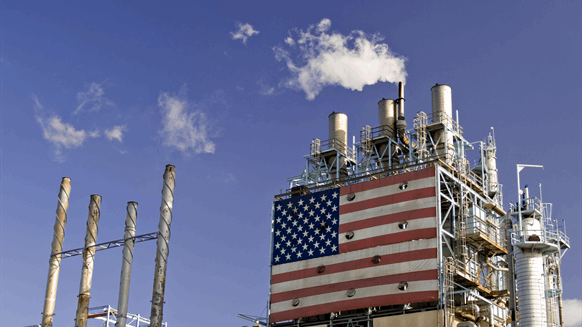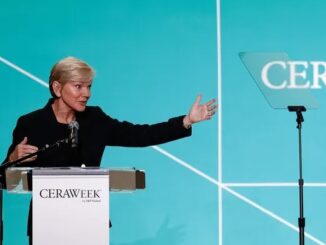
The USA Department of Energy unveiled Thursday more than $21 million in grants for the development of technologies and innovations that advance the commercial-scale deployment of clean energy, with selected projects ranging from solar to nuclear solutions.
“This funding will address core commercialization challenges, while improving laboratory processes, creating accessibility to clean energy resources, and enhancing connections to underserved communities”, it said in a press release.
“This investment brings our nation one step closer to the Biden-Harris Administration’s goal of lowering energy costs, creating good paying, union jobs, and deploying clean energy to achieve net-zero carbon emissions by 2050.”
The annual investment is part of the Technology Commercialization Fund (TCF) established 2005.
Eighty percent of this year’s TCF allotments for Core Laboratory Infrastructure for Market Readiness have gone to “technology-specific partnership projects”.
Solar Solutions
The DOE’s Solar Energy Technologies Office (SETO) has picked the Sandia National Laboratories (SNL) for the development of a microgrid product for agrivoltaics, or the production of crops and solar power on the same land.
The SETO has selected the National Renewable Energy Laboratory (NREL) for three projects. One aims to raise the conversion efficiency limit of cadmium telluride cells by using negative cracked film lithography. Another is for the commercialization of the Reflected Target Non-Intrusive Assessment, a new optical measurement for concentrated solar power (CSP) mirrors. The lab will also “further commercialize the drone-based Non-Intrusive Optical (NIO) Technology for efficient and automated optical characterization of heliostats in CSP”, the department said.
Wind Solutions
The SNL has also been chosen by the Wind Energy Technologies Office for simulations that promote the industry-scale adoption of solutions that minimize the so-called wake effect, which limits power generation.
Funding for the lab also supports its “Wind Interconnection Standard Platform (WISP) tool for automating and accelerating interoperability and interconnection certification procedures for distributed wind power converters”.
Hydro Solutions
The NREL is the sole lab picked by the Water Power Technologies Office, for the development of “an interactive visualization and analysis web tool for climate-smart decision-making by power grid utilities, operators, and planners”.
Nuclear Solutions
The Argonne National Laboratory has been included by the Nuclear Energy Office to “provide a basis for the implementation of a robust process for recycling used nuclear fuel and managing nuclear waste”, as well as to “improve the modeling capabilities, fidelity, and maturity of the System Analysis Module for advanced non-light water reactor safety analysis”.
The Idaho National Laboratory (INL) has also made it to the nuclear program for a project seeking to commercialize a liquid level sensor that is highly tolerant to radiation.
An allotment for Oak Ridge National Laboratory (ORNL) backs “unique solutions for heat exchangers, pump impellers, and other components”.
The SNL has also been picked by the nuclear office for its work on improving the safety of reactors through new software.
Hydrogen Solutions
The Hydrogen and Fuel Cell Technologies Office picked the Oak Ridge National Laboratory to find a way to make solid oxide electrolyzer cells in a fast and high-volume manner.
The INL has been selected for the development of solid oxide electrolyzers, or the process of deriving hydrogen from water through oxidization.
The Lawrence Livermore National Laboratory (LLNL) has been chosen for its commercial prototype of a fiber-optic sensor that seeks to directly detect hydrogen leakage, as well as its work on developing an “accelerated durability test for cryo-compressed hydrogen tanks”.
The SNL has also made it to the hydrogen program for its work on enabling the “commercial adoption of Hydrogen Plus Other Alternative Fuels Risk Assessment Models, a software toolkit for assessing the safety of hydrogen and other alternative fuels infrastructure”.
Grid Solutions
Pacific Northwest National Laboratory has received funding to “deliver long-duration zinc battery modules, testing data, and technology transition plans for scale-up and commercialization”, as well as to “develop an ultra-stable reference electrode as an in-situ system diagnostics tool for redox flow batteries”.
Another lab picked by the Electricity Office, the INL “will accelerate the commercialization of OmniTap for enhanced protection of process controls within the U.S.”.
The LLNL has also been listed by the office to enable the commercialization of self-programmed microgrid algorithms, in a project with the NREL and the Los Alamos National Lab.
The office has also picked the LLNL for the development of “a high-capacity quasi-solid-state Zn–MnO2 battery”, while the NREL also has another Electricity Office-selected project that seeks to demonstrate “a robust data-driven phase identification tool for customer phase connectivity determination in distribution grids”.
The ORNL has been picked by the office for a software tool “for measurement-driven automatic and adaptive damping control technology”.
Collaborative Projects
The NREL has another supported project with OTT’s coLABoratory Open Voucher Call that would forge lab collaboration with small business innovators and underserved or underrepresented communities.
The Brookhaven National Laboratory has received funding for its Minority Serving Institution Connect program to help it in “stakeholder collaboration, outreach events, fellowships, and future planning for funding sources”.
For international cooperation, the INL has successfully proposed another project, “to engage foreign companies and U.S. companies with foreign influence more effectively”. Its funding also covers a DOE-approved template that would streamline the negotiation process for Cooperative Research and Development Agreements.
Also selected is the Thomas Jefferson National Accelerator Facility, which “will explore Other Transaction Authorities (OTAs) to document best practices for rapid R&D [research and development] and provide recommendations to the national lab system”.



